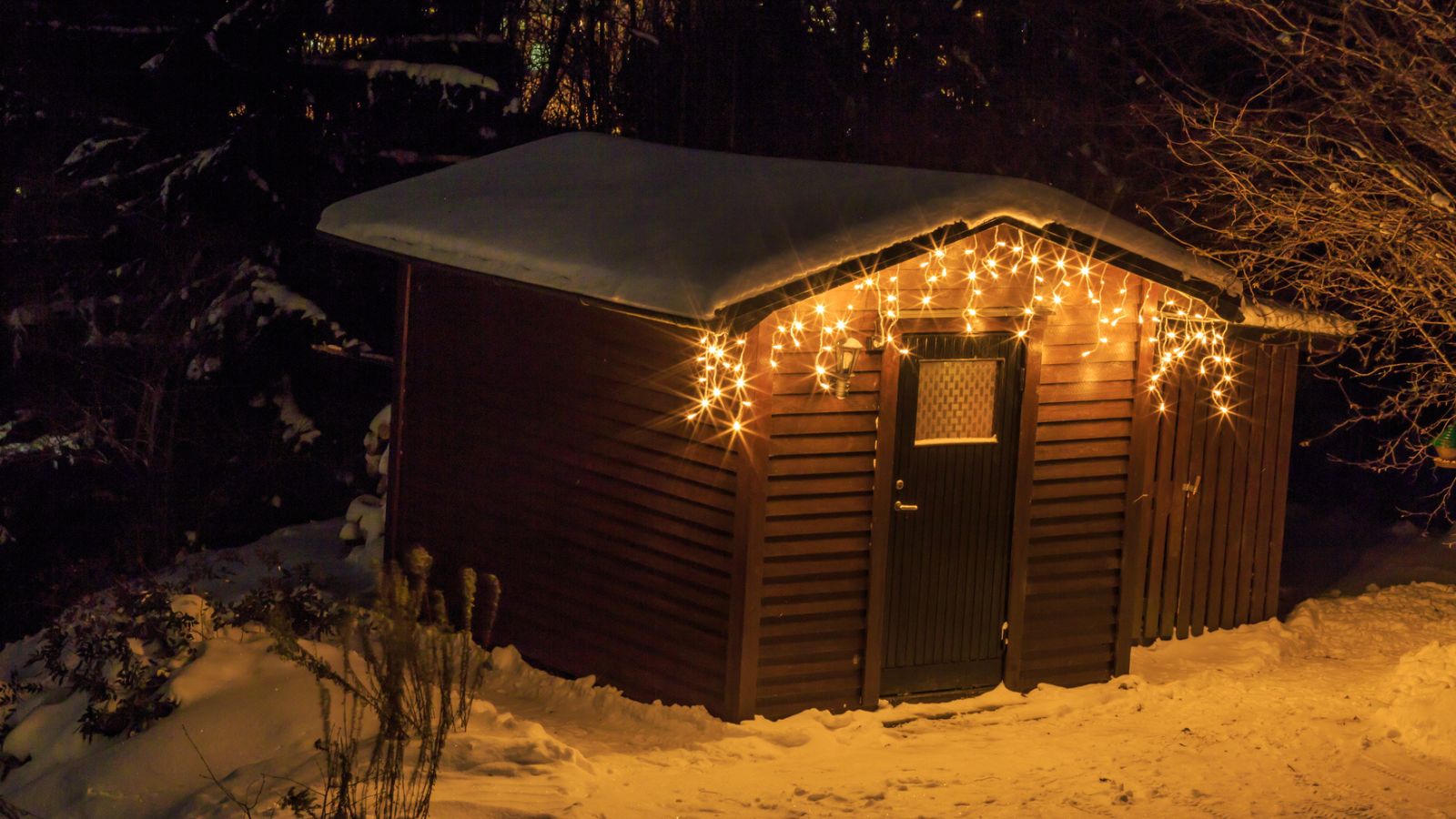
A garden shed is the unsung hero of any yard. It's a perfect solution for storage and potting seeds, and keeps the noise of DIY projects away from the house. Sheds are so low-profile that it's easy to forget they're even there, and leave them out of your garden lighting plans.
However, keeping your shed in the dark can be an issue. It's a security risk that makes your shed an attractive target for intruders. On top of that, it can hamper your garden's style, leaving a dark, unlit corner of the yard that stands out against the rest of your lighting scheme.
I spoke to lighting experts about how to light a shed. They gave me some handy tips for making your your shed is secure, stylish, and practical.
1. Light for security with motion-detection
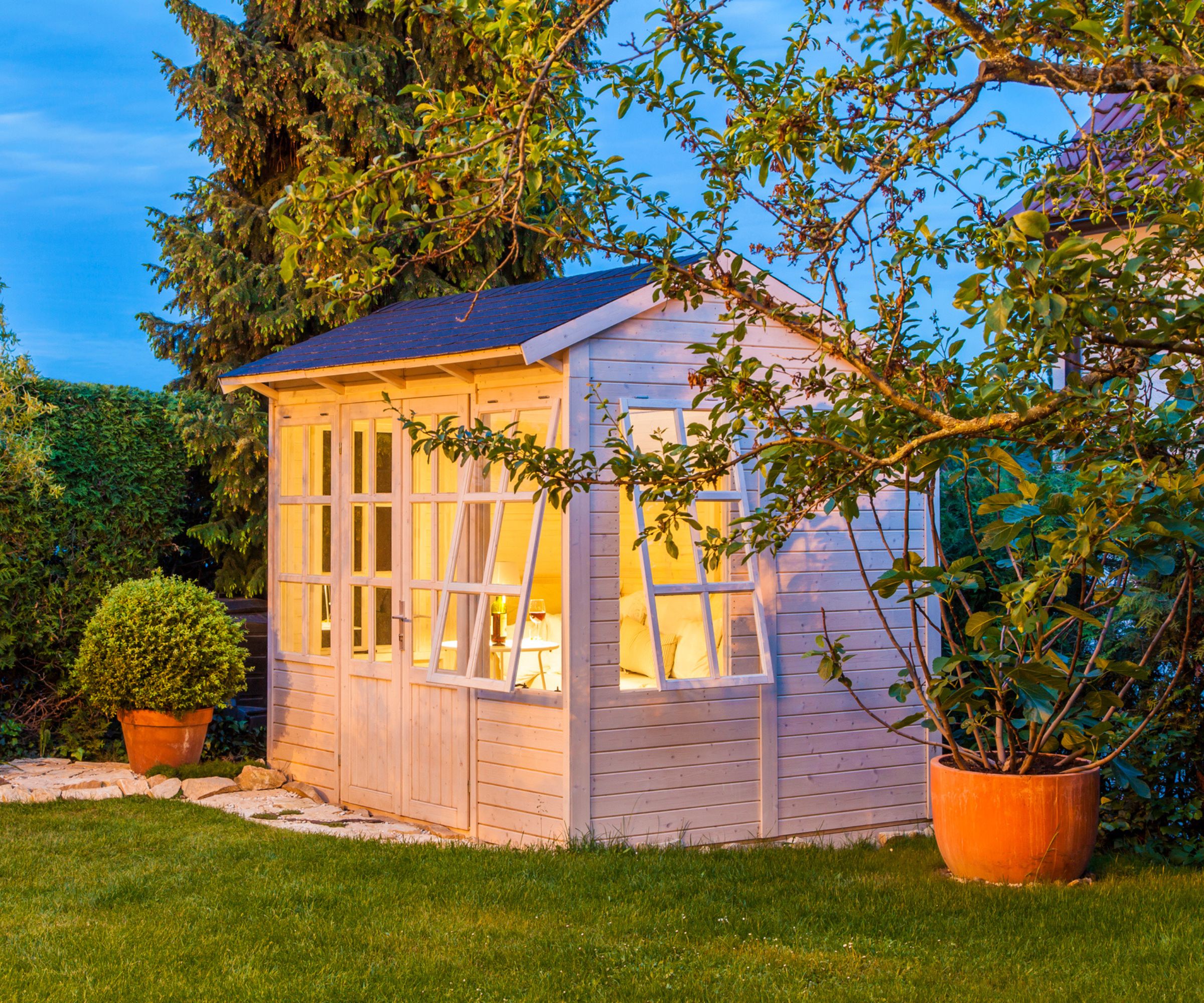
Security is the biggest priority when lighting a shed. Sheds hold a lot of expensive tools, equipment, and lots of other items besides. Whether you have a valuable ride-on mower or a box full of Christmas lights, it's important to light your shed in a way that deters intruders.
There are lots of ways to achieve this, and they vary depending on the size of your shed, its location, and your budget. But whatever the variables, use motion-detection lights. The experts I spoke to all recommend them.
Motion-detection lights lower your lighting bills because they aren't switched on full power all the time. They're automatic, which is helpful when you walk down to the shed because it gives you automatic lighting as you unlock the door. Most importantly, motion-detection lights startle would-be intruders, lighting them up with bright light and deterring them from breaking in.
Lighting expert Joel Worthington says 'Add bright, motion-activated floodlights on the shed to illuminate a large area around the shed.' Fellow expert Dara Greaney agrees, telling me 'For security, it's important to use plenty of light, supplemented with motion sensors. These sensors can control multiple fixtures.'
The best security lights will have dusk to dawn sensors. These switch the light on at around 20% at sunset. This lights the shed gently, putting off intruders, but they switch to 100% power when they detect motion as an extra deterrent. Joel says 'Use light-activated lighting so the lights automatically come on at dark and turn off in the morning.
For even more security, install security cameras. Dara suggests 'For added security, consider combining motion-activated lighting with Wi-Fi cameras to create a comprehensive security system.'
These three hardwired lights have a dusk-to-dawn sensor for security all night long. It shines at 6300 lumens, which will flood the area around your shed with bright, white light.
If you live somewhere with reliable sunlight, try these solar-powered lights. This two-pack has three different lighting modes and is IP65 weatherproof. Best of all, they're remote-controlled to make it easy to set timers and the sensitivity of the motion sensors.
If you're on a budget, it's worth considering this great value pack. These six lights can easily screw into a wooden shed wall for automatic lighting around the entire structure.
2. Use hardwired lighting inside
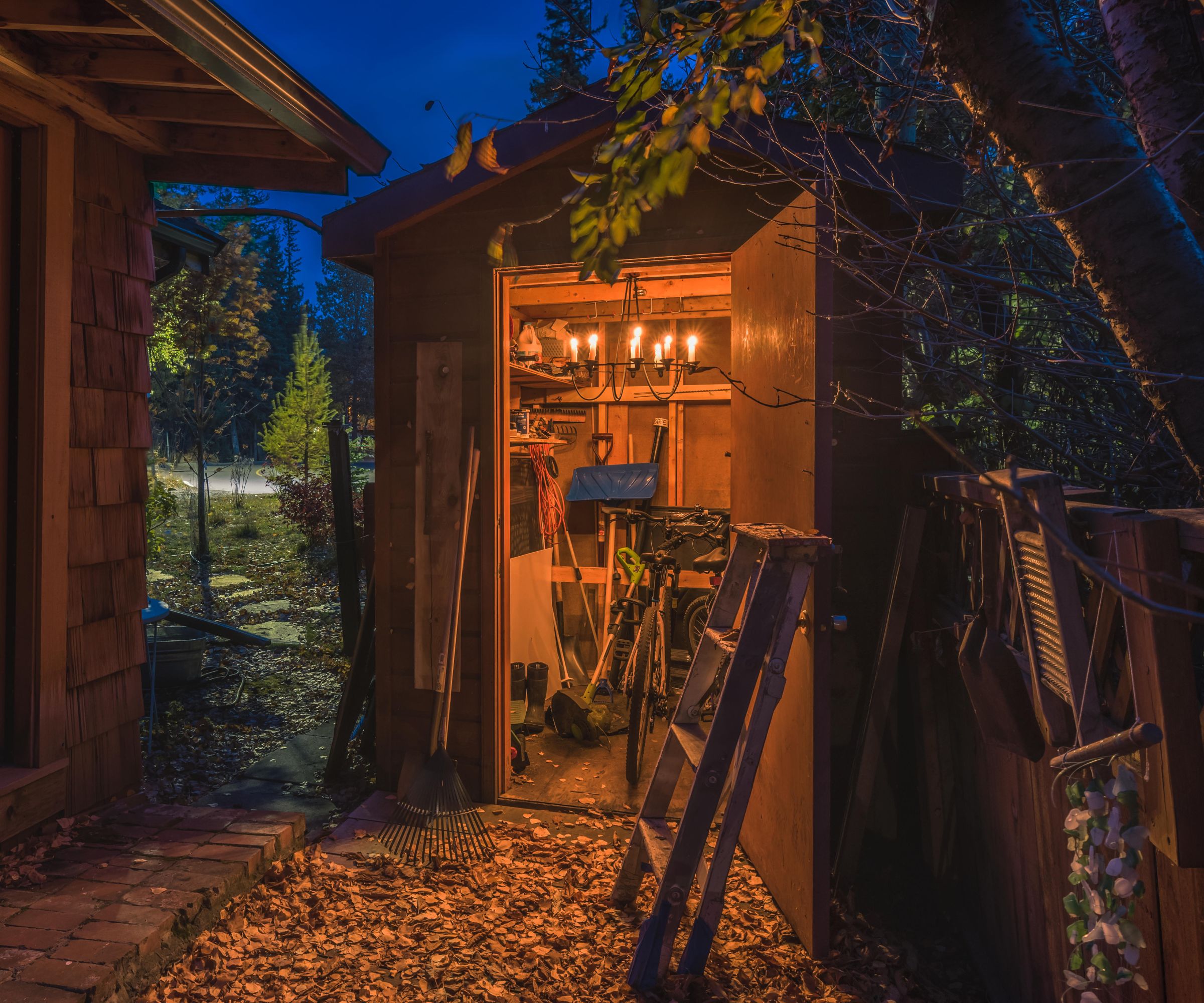
Sheds are places for practical work with tools, so you need a bright light to see what you're doing. Even if you don't tinker with woodworking projects or pot seeds, you need to be able to see the tools you're grabbing out of the shed. In almost every case, your best option is to hardwire lights into the shed. Solar lights aren't reliable, and you can't switch them on during the day, which can be a problem if your shed doesn't get any natural light.
Dara Greaney gave me handy blueprints for hardwiring lights. 'If possible, hardwired lighting is ideal, especially if there is a power source less than 10 feet away. Alternatively, you can use 12-volt landscape lights by running low-voltage wiring and mounting floodlights on the ceiling with ½-inch surface mounts. A DC-compatible switch can be used for turning the lights on and off.'
However, it's best to get a professional to do this wiring. Joel Worthington says 'An electrician can help determine if electrical wiring can be added to the shed and tied to the main electrical source. This should only be done by a qualified electrician and within the electrical building code.' Codes vary from county to county, so a local expert is best placed to ensure your shed lights are safe and legal.
Of course, there are some times when you can't hardwire your shed. In this case, opt for battery-powered lights inside your shed. Joel Worthington says 'If the shed doesn’t have electrical wiring, homeowners can use battery-powered LED lights. Battery-operated touch lights or lantern lights are other options.' However, these are less practical than hardwired lights, because the batteries in these lights will run out after a few months.
3. Play with different styles on the exterior
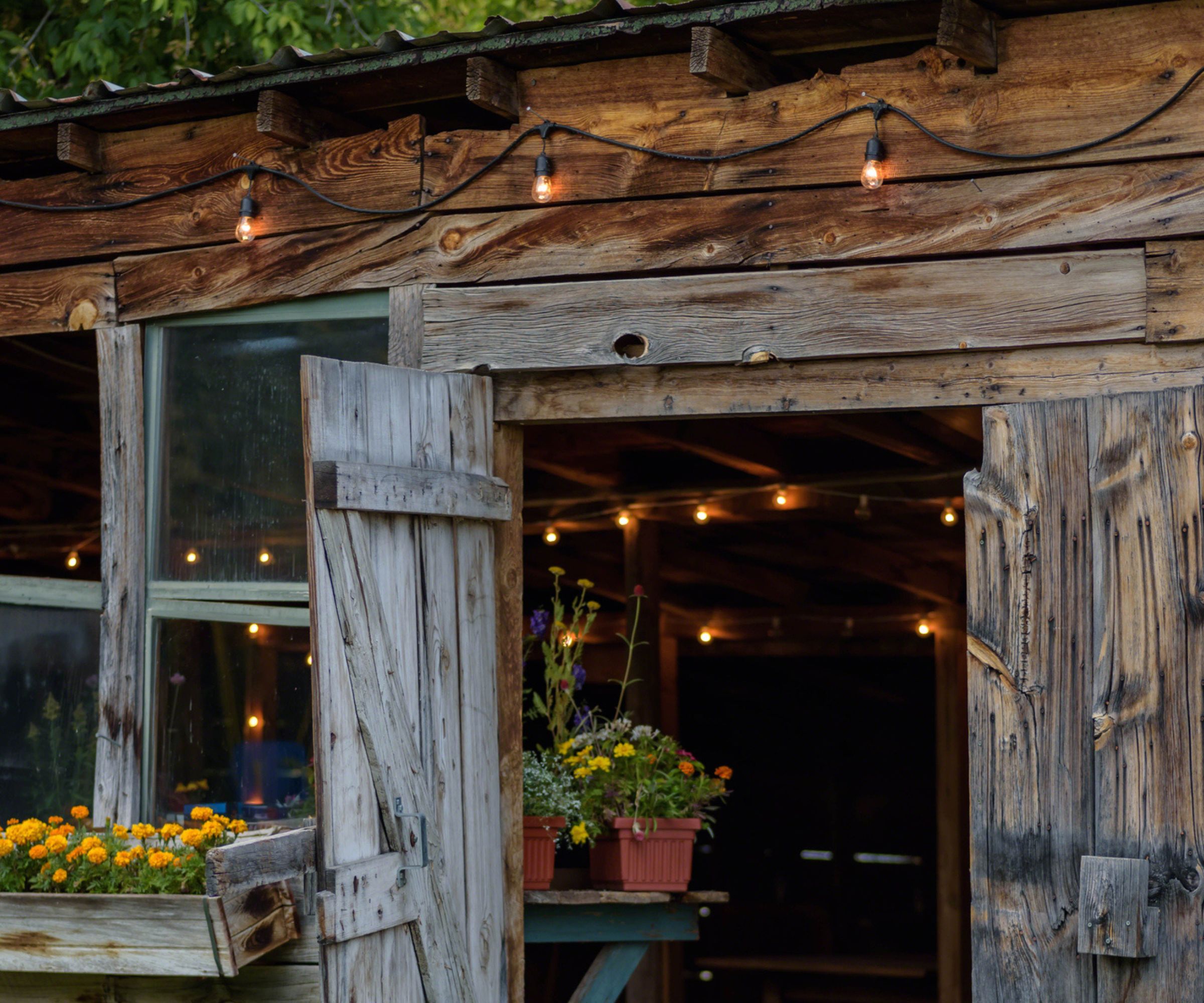
The two options above will make for harsh, bright lighting if you don't take steps to soften them with landscape lighting or decorative touches. There are lots of options for this. Joel Worthington suggests 'Homeowners can use string lights, lanterns, LED strip lights and pendant lights for more stylish touches beyond more traditional lighting.'
Landscape lighting with spotlights is a common solution. Dara says 'Landscape lighting is a great and often overlooked option for adding aesthetic value. You can use spotlights to accent the shed's exterior, either from the bottom up or top down, and consider using RGB landscape lights to add color. In the past, it wasn't bright enough, but with modern LEDs, brightness is no longer an issue. This option is typically cheaper and more reliable than solar lights. and install floodlights inside for task lighting.'
Alternatively, you can use more traditional exterior lighting. Sconce lights don't just have to be for porches or the exterior walls of your house; you can also use them on the outside of sheds.
These modern farmhouse-style lights have a 40-feet detection range for reliable security lighting, offering a more stylish security measure than plain security lights.
These spotlights are perfect for lighting up the side of a shed. With a high IP67 weatherproof rating, they're perfect for the backyard, and you can select any RGB color through an easy app on your phone.
These LED strip lights are perfect for running under the eaves of your shed, creating automatic, colorful lighting that can be controlled from your phone.
4. Stay away from solar lights
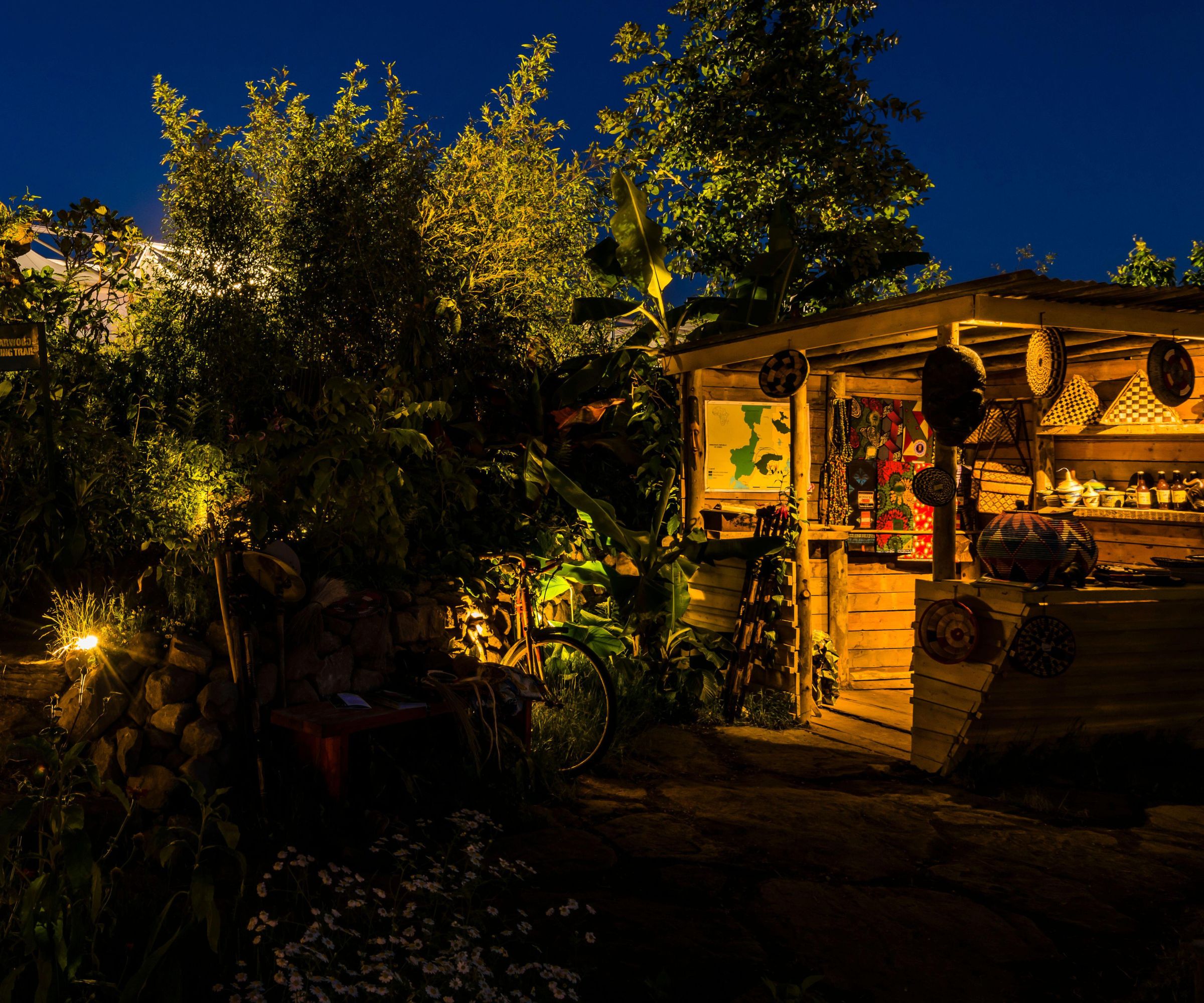
If you can, avoid solar lighting for lighting up your shed. It should only be used as a last resort, because solar lights are unreliable, expensive, and you can't use them inside the shed because they're light-sensitive.
Joel Worthington says 'If the shed doesn’t have electricity, solar lighting is a great option to offer cost-effective lighting for the outside of the shed. However, solar lighting inside a shed may not work as well due to the lack of daytime light.'
Dara Greaney agrees. 'Utility-powered lighting is generally recommended because it is more cost-effective. The expense of solar panels and batteries often exceeds the cost of electricity. However, if a power source is not nearby, solar lighting can be a viable alternative.'
Sheds aren't the only overlooked parts of a yard. Learning how to light a fence is another smart way of improving your garden's security and style, turning a functional structure into a key part of your design.







